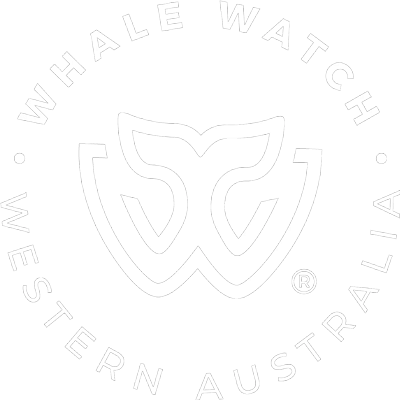Whale Watching Rules & Regulations
Responsible whale watching takes patience, discipline, skill and a full understanding of The Language of the Whales™ To understand how we must act when in the company of cetaceans we have compiled this page to help those new to the industry understand the rules & regulations and help to stamp out unprofessional and illegal activity around what we believe, is a gift, to be able to watch whales in their environment, all year, right here in Western Australia.
Rules & Regulations
Mothers and calves especially are very sensitive to aggressive, erratic and frantic movements and the sound of vessels and can hear them from many miles away. To ensure a responsible whale watching experience it is important to respect the rules that are in place when approaching cetaceans and for the duration of time that you are with them.
The Australian National Guidelines for Dolphin and Whale Watching as provided by the Australian Government are in place for the protection of cetaceans. Abiding by these rules and regulations ensures that we are observing behaviour and not influencing behaviour. Following these guidelines and also incorporating matching of energy levels of the pod we can enjoy a curious and natural encounter with the magnificent whales and dolphins of Western Australia.
Can you make noise to attract cetaceans?
No, to intentionally make sound to attract whales or dolphins by whistling, shouting or banging on the side of a vessel is illegal and a complete lack of respect towards the cetaceans. All whales and dolphins have incredibly sensitive hearing with sound travelling five times as fast through water as it does on land. Understanding cetaceans and how they live their lives is vital to ensuring we behave respectfully around them and sound being their main sense should not be used as a way of trying to attract their attention otherwise you now are influencing behaviour exactly the same way captive whales and dolphins are trained.
Can you drive close behind cetaceans?
No, all whales and dolphins require a reactionary distance as do all wildlife. Different species have different requirements, but as a general rule it is important to ensure that within 100 meters of any whale or dolphin you slow to no wake speed (under 5 knots) and do not approach within the 60 degree no approach zone behind or in front of them.
Can you feed cetaceans?
No, whales and dolphins are wild and their entire lives depend on finding that next meal. Influencing the way they forage by feeding them creates a dangerous situation. All cetaceans are highly intelligent and will understand by seeking their meals from an easy source without needing to forage is an energy efficient option. The entire culture of a family pod can change when they become dependant on humans for food as mothers spend less time teaching their calves where to find food and how to forage leading in an increasingly high mortality rate for calves and juveniles, jeopardising the populations future.
How close can you get to cetaceans?
The question we ask is, “How close do the whales or dolphins want to be with us”? as every one of our interactions is lead by the wants and needs of the cetaceans. Reactionary distance is seen in all wildlife and must be respected, this could be 50 meters or 500 meters dependant on the individual. We will never place ourselves on top of whales or dolphins in an attempt to get close to them, cetaceans must be the ones to approach you. Allowing the recommended distances as outlined in the pdf download ensures that when a whale or dolphin wants to approach the vessel they are welcome to do so. In general 100m to their flanks and 300m if there is a calf. No approach in the 60 degrees fore and aft of the Cetacean.
Can you fly drones over cetaceans?
There are strict rules and regulations in place when flying drones or any aircraft above cetaceans. You must firstly apply for a permit from your regulatory government authority for the permission to fly aircraft (including drones) above cetaceans. Onboard Whale Watch Western Australia we have the correct permits to fly our drone above cetaceans for the research work completed onboard.
Can you touch cetaceans?
No, touching of any whale or dolphin is not permitted and should not be encouraged. All cetaceans have very sensitive skin and even the slightest motion can cause them to respond erratically dependant on the individuals personality and environment. No touching includes not only hands on contact, but also any touching with the end of a GoPro or similar implement being pushed towards the cetacean.
‘Our goal in every interaction is to observe and not influence behaviour,
this is the true art of whale watching’.
Gem Sharp, Whale Watch Western Australia

Have You Witnessed a Breach of the Guidelines?
Whales and dolphins depend on you to alert the appropriate authorities if the guidelines have been breached. Should you have been on a tour with an operator who breached the rules, observed an incorrect interaction from shore or from your own vessel it is important to alert the authorities. Report your incident below and lets work together to eliminate the continued harassment of Western Australian cetaceans. Now you have a voice to assist us in stamping out unprofessional and illegal activity when interacting with cetaceans.







